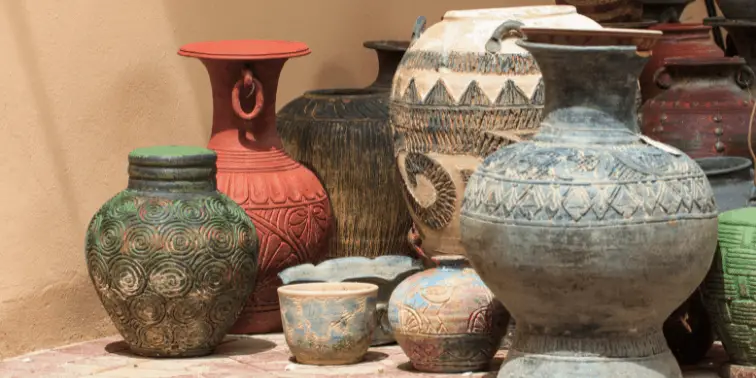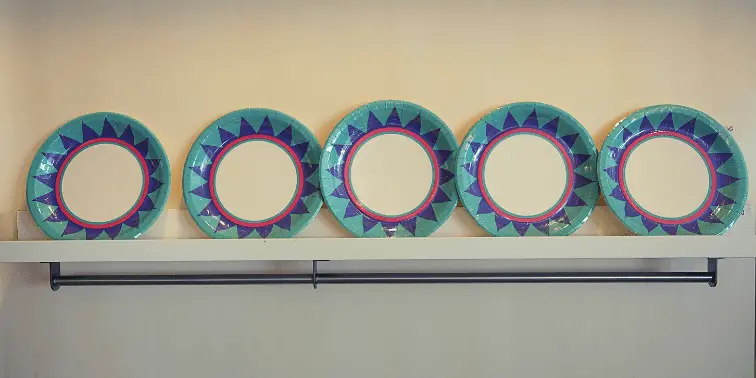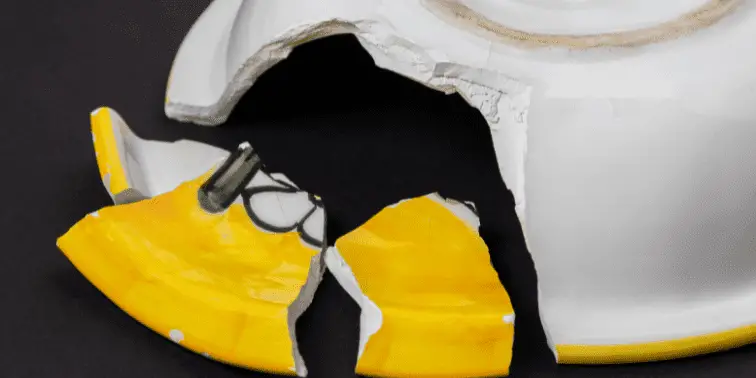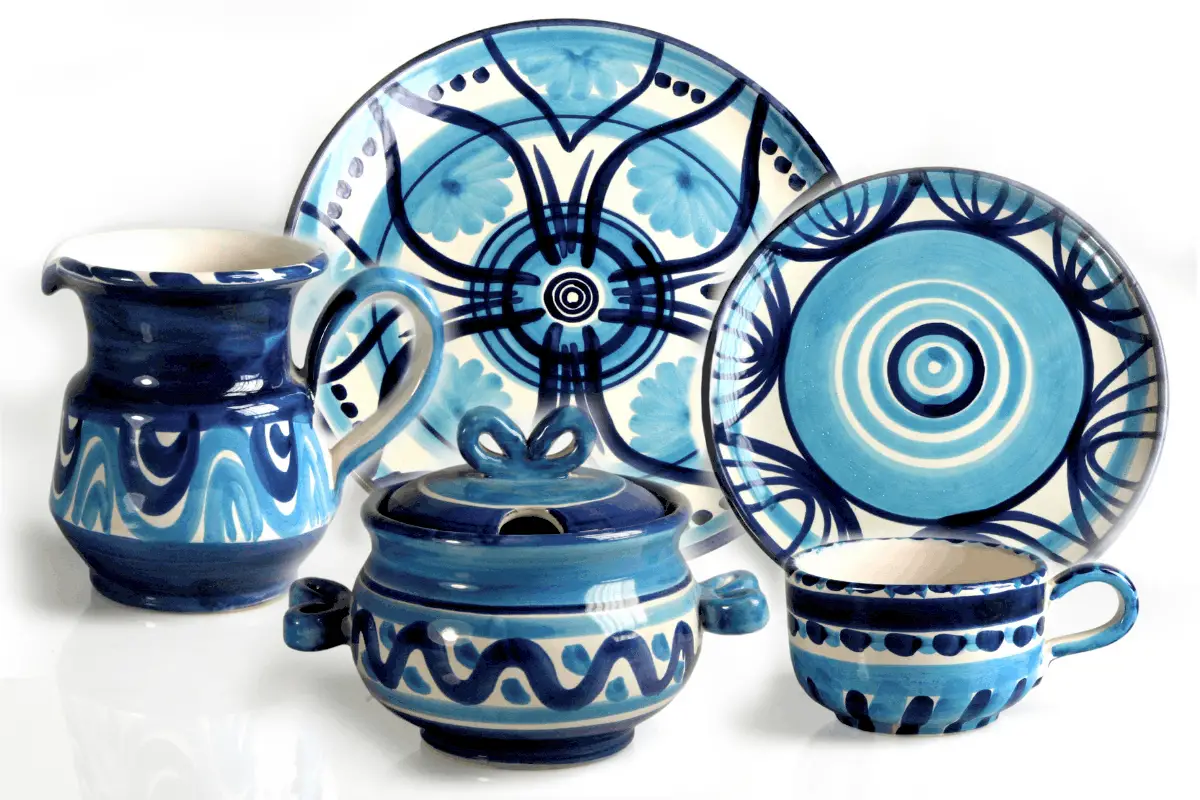Ceramics (or pottery) can be seen in some of the oldest vessels known to humankind. People used them to store and carry foods, liquids, and other non-edible substances. Ceramics represent some of the earliest human cultures, yet their usefulness and aesthetic appeal have kept them popular in modern times.
Each of us probably has at least one ceramic item in our home.
Like other fragile items, ceramic pieces require great care when packing and moving them. Some ceramic items are more subject to breakage than others, and some of them need extra protection because they are unique—made by individual artists, not on assembly lines.
Some pieces have exceptional, non-monetary value too, especially when that individual “artist” is a loved one.
Lots of us have lamented the broken ceramic bowls we discover in what we thought were well-packed moving boxes. So, what should we do to minimize the likelihood of ceramics breaking in future moves? Keep reading and find out how to pack ceramics for moving, so they don’t break!
Table of Contents
Types of Ceramic Materials
The raw materials for ceramics consist of various types of clay removed from the earth—some more refined than others to produce items with different designs and purposes. The firing process dries and hardens clay by drying and, at very high temperatures, liquefying it to make it harder.
It would be helpful to know which household items are made from which ceramic materials before moving them, so what follows are the three main types of ceramics you might be packing.

Earthenware, including terra cotta, comes from the coarsest clays. It is baked and hardened at a low temperature of around 1000°F. The surface hardens in the kiln, but it remains brittle and porous. Even with lead-free glazes, it’s not considered wise to use earthenware for food or drink due to leaching.
Earthenware is more common in decorative items like flowerpots.
Stoneware comes from a type of clay, also called stoneware. It is more fire-resistant and can bake in a kiln at a higher temperature (1200°F), a temperature high enough to vitrify it (i.e. turn it to liquid to make it harden into a non-porous material).
Stoneware is used in dining plates, drinking mugs, mixing bowls, and other food preparation and consumption products.
Porcelain, including bone china, is made primarily from a fine clay called kaolin. It is fired at temperatures reaching over 2500°F, making it harder and more durable than other ceramics. If you still own Corning Centura dishware (now discontinued), they are porcelain. However, be aware that porcelain, like any ceramic material, is fragile and subject to breakage.
Did you know that glass, brick, silicon, and carbide are also considered ceramic materials? Like those discussed above, these materials have industrial as well as domestic uses.
Types of Ceramic Items
Some households have only a few ceramic items, which might comprise dishware and maybe a figurine or two. Others have gathered numerous ceramic items over the years; in fact, you could describe these as collections. We’ve divided them into the three categories that follow.
Practical Mass-Produced Ceramics
This category can include anything from plates, mugs, and bowls to bathroom fixtures to the stems in LED lightbulbs. We hope you haven’t become so enamored of your bathroom sink that you want to put it on the moving truck, but there are lots of other ceramic items you will want to pack.
Mass-Produced Decorative Ceramics

This category covers decorative ceramics, though not ordinarily used for cooking or serving food. These might be the decorative figurines mentioned above or collectible (or commemorative) plates or bowls. Often, these items sit atop shelves or in glass-paneled “curio” cabinets.”
Unique Ceramic Items
While this category overlaps somewhat with those above, it is different. These ceramic items are irreplaceable because they were created only once by one person. This individual likely is a professional artist (ceramicist or potter), amateur potter, or child.
In other words, these items warrant the greatest care when packing and moving them.
But exactly how do you pack ceramics for moving, so the chances of breakage are slim?
How to Pack Ceramics for Moving
You can’t be too careful when packing ceramics for moving. Speaking for myself, each time I have moved, at least one ceramic bowl or plate has arrived broken, no matter how much care I put into packing it. So I looked to some experts for more wisdom on the topic.
Packing a Single Ceramic Piece for Moving
For a single ceramic piece, pack the item in a smaller box, wrapped in layers of bubble wrap and foam and the inside fully padded to eliminate even the slightest movement. Note: Do not use packing peanuts in the box containing the ceramic piece.
For an added layer of security, place the smaller box inside a larger one, filling it with even more packing material. Ensure that every layer of material surrounding the piece is taped to hold it in place.
Finally, the bottoms and tops of both boxes need to be covered with evenly distributed cushioning, such as packing peanuts or Styrofoam sheets (preferably recycled).
Use expandable foam if needed but consider shredded rags first if you can find enough to pack the box tightly enough. Don’t forget to tape both boxes shut, including the inner and outer top flaps, and make sure to reinforce the bottom and sides of the outer box by wrapping strong packing tape around it, side-to-side and end-to-end.
And of course, you must mark all sides clearly as “FRAGILE.”
Packing Multiple Ceramic Pieces for Moving
Perhaps you own a complete set of pottery tableware, or you’re a potter with multiple handmade pieces you must move to a new location. (or you took a pottery class at your local rec center like me!) Either way, you need to know the best way to pack multiple ceramic pieces.
First, do the pieces nest, as would be the case with plates and bowls? Or should they be separated—as with vases, cups, and pots (with and without lids)? Each category calls for a different packing strategy, and it is not a good idea to intermix “nestables “and “non-nestables.”
Appropriately done, nesting plates and bowls can form something of a “mutual support” arrangement, with each giving extra support to those nested inside and vice versa. However, these pieces mustn’t touch one another directly. Instead, they should be separated by two sheets of shock-absorbing material, like bubble wrap, foam padding, or corrugated cardboard.
Then, you must make sure there is absolutely no space remaining in the box. If there’s a lot of space, use smaller boxes (filled with padding) to lessen it, and fill the rest with extra buffers like packing peanuts, rags, scrunched newspaper, etc. Finally, test the box for any movement inside by gently moving it around.
Packing vases and pots (and any accompanying lids) is a different matter. For these ceramic pieces, we recommend placing them side-by-side, rank and file style, in one or two layers. Try not to mix different sizes and be confident that each vessel is wrapped in shock-absorbent material that is then taped all the way around.
Again, leave no space in the box.
What if Something Breaks Anyway?

While it’s generally true that mass-produced ceramics are easier to replace than those created by individuals, it would be a shame to see any ceramics at all be damaged during a move. Now that you have learned the complex yet highly beneficial ways to move various kinds of ceramics, you should have a more successful move than you might have had in the past—for ceramics, that is.
You might still find a broken piece or two, though, regardless of your efforts. But consider that ceramics can also break without ever leaving your home, especially if you have pets or young children.
If you find that a unique piece has broken, whether at home or while moving, approach its creator if possible, tell them what happened, and ask for another unique piece.
If a child made the piece, offer them the materials to create a new one. If it was a professional artist, lament the breakage, and commission something altogether new. Either party should be delighted by the opportunity!

